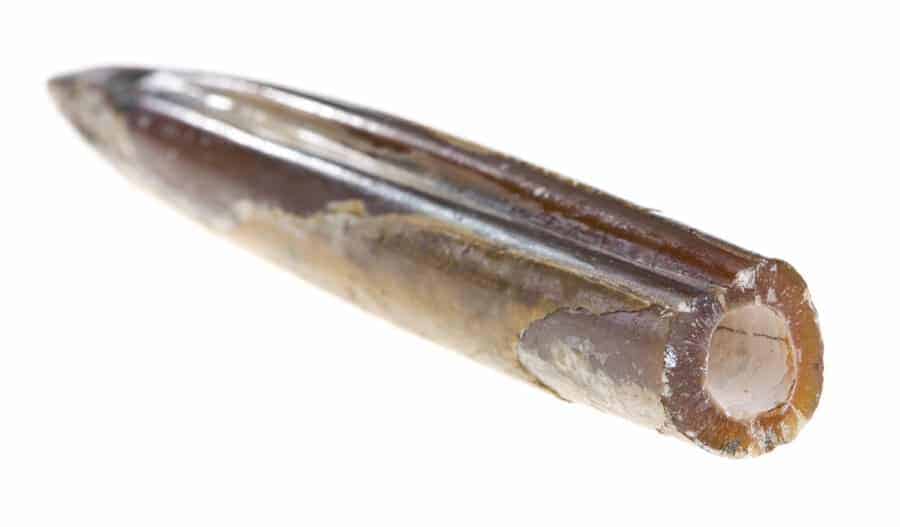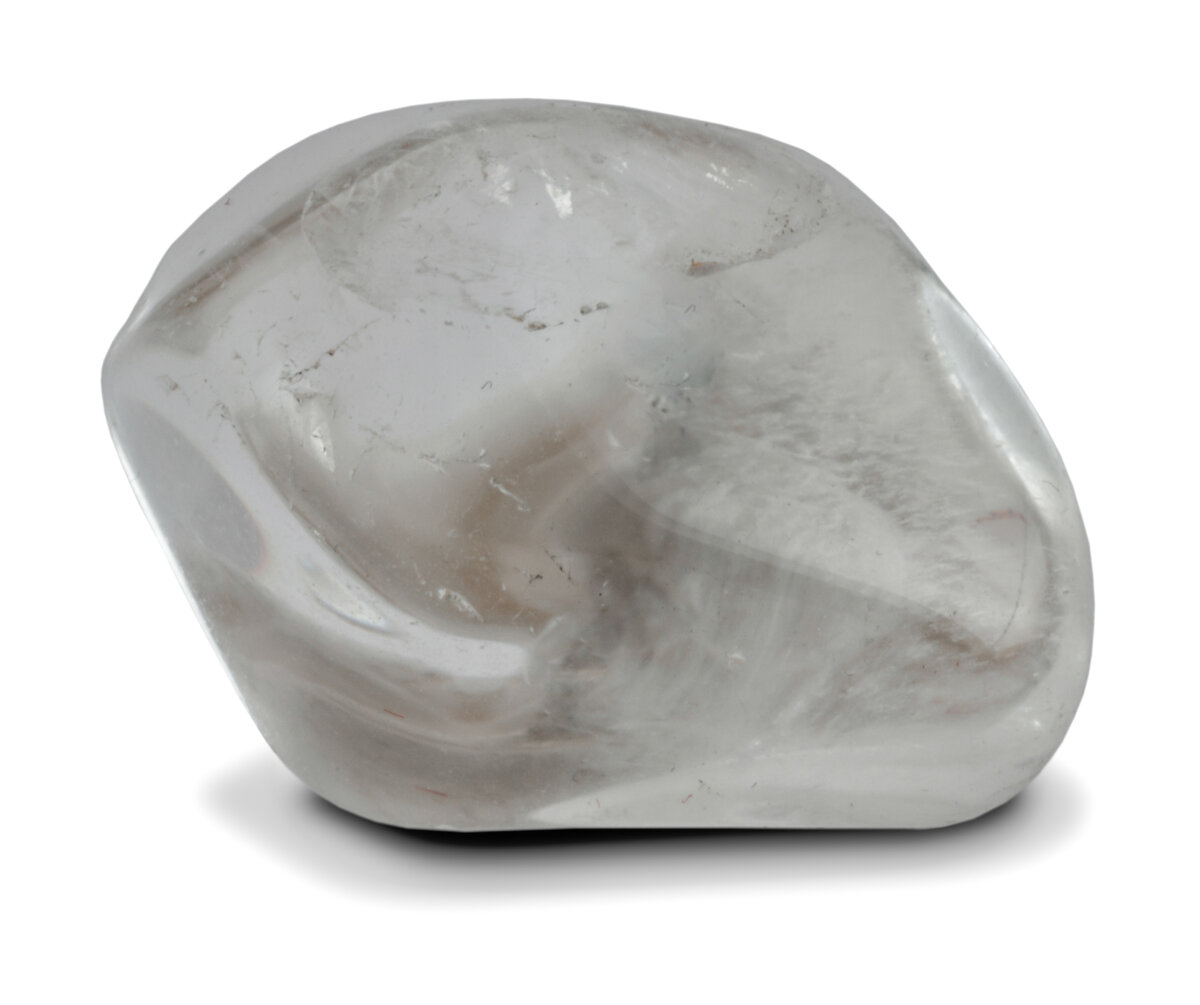If you’re hoping to do some rockhounding in Delaware, chances are you have felt some frustration with the apparent lack of cool rocks and minerals to be found and places to search. The truth is, Delaware isn’t well known for its rockhounding, and that’s not without reason. Beyond its relatively small size, most of the surface geology of the state is comprised of relatively young sedimentary rocks that are more well known for fossils than interesting rocks and minerals.
Still, there are some interesting locations you can check out if you’re wanting to get out and do some collecting. Many of the fossils in Delaware are well worth collecting, and you can find some fun minerals like quartz crystals and sillimanite if you know where to look.
The best place to rockhound in Delaware is the Piedmont region in the northern part of the state which contains metamorphic rocks and minerals like gneiss, sillimanite, and garnet. Beaches near Cape Henlopen are popular for collecting quartz, while belemnite fossils are often found just east of St. Georges.
| State Symbols | |
|---|---|
| State Mineral | Sillimanite |
| State Rock | — |
| State Gemstone | — |
| State Fossil | Belemnitella americana |

Rocks and Minerals Found in Delaware
Delaware isn’t well known for its rock and mineral production, and for good reason. There is disappointingly little in the way of collectible material here, mostly because the vast majority of surface geology is comprised of relatively young sedimentary rocks.
You’ll find the vast majority of interesting minerals in the northern part of the state, where metamorphic rocks like gneiss, schist, and marble outcrop as part of the Piedmont region of the Appalachians. You can find typical metamorphic minerals like garnet and mica here but they tend to be of poor quality.
If you’re rockhounding in the Piedmont region you’ll likely want to get your hands on a specimen of sillimanite, which is fairly widespread here and has earned a place as the state mineral of Delaware.
Some of the other more popular items with collectors are quartz crystals from the Atlantic coast beaches and fossils, particularly belemnites.
The most commonly found and collected rocks and minerals in Delaware are:
- Sillimanite
- Quartz crystals
- Belemnite fossils
- Mica
- Feldspar
- Garnet

If you’ve already found a rock and you’re not sure what it is, I would highly recommend checking out my Practical Rock Identification System. This bundle of information includes a book, videos, and online tools. It is, simply put, the most comprehensive and easy-to-understand rock identification system you’ll find anywhere.
You can also read through my free rock identification guide and mineral identification guide which are filled with useful information and tools.
Where to Rockhound in Delaware
Important Disclaimer: I have not been to these locations myself, and I do not know if they are currently open for collecting. Use this resource as a guide to get you started. Follow posted signage and always get permission from the landowner to collect.
Through quite a bit of research and cross-referencing of available literature, I have compiled this list of some prospective locations in Delaware which I would recommend to people looking to do some rockhounding. These are mostly comprised of beaches, old mining prospects, washes, streams, and historically known rock and mineral collecting sites. For additional reading, I’d highly recommend these books you can find on Amazon:
Please remember that rock collecting locations are constantly changing. Specimens may become depleted from other collectors, the location may have been built on or altered, locality information in literature may be inaccurate, and property ownership may have changed hands. Joining up with a local rockhounding club for a group trip can often get you access to otherwise off-limits locations like privately owned mines and quarries. There is a rockhounding club in Delaware and several in neighboring states so you can likely find one nearby.
I have tried to take care not to list locations within National Parks or Historical Site boundaries since collecting is illegal there, but please remember that it is up to you to make sure you have permission to collect wherever you are. Even if you are on land that is generally open for public use there may be privately owned mining claims inside those boundaries and you’ll need to get permission to collect on that location.
Though there are many locations listed here, this list is far from exhaustive. A location’s listing here is not a guarantee of accuracy. Be safe, never go underground, and make sure to get permission from the landowner to search for and collect specimens.
If you’re planning on heading to the field, make sure you have all the gear you’ll need! To get started, you can check out my recommended gear page which contains my full reviews for every Geologist’s favorite rock hammer and the best hiking backpack I’ve ever owned.
Delaware Rockhounding Sites
Primarily due to its diminutive size, Delaware doesn’t have a ton of great rockhounding sites to choose from. Still, there are enough locations scattered throughout the state to keep a collector entertained without having to cross state lines.
The most prominent and widespread collectible mineral in Delaware is probably Sillimanite, which is a polymorph of kyanite and andalusite found in metamorphic rocks. In Delaware’s case, that means that you can primarily find it in the Piedmont region in the northern part of the state.
Most rockhounds in Delaware will be familiar with belemnites, the state fossil. The most popular and well-known belemnite collecting sites are along the Chesapeake and Delaware Canal to the east of St. Georges, particularly in the gravels under the Reedy Point Bridge. Here is a nice video of a woman finding an entire bucket full of fossils near this location, including many belemnites:
The easiest and most accessible rockhounding excursion you can make in Delaware is a stroll along the beaches on either side of Cape Henlopen. This long stretch of beaches can often turn up quartz crystals, locally known as ‘Cape May Diamonds’.
They get their name because they have weathered out rock upstream from Cape May, New Jersey. Though they begin as beautifully terminated crystals, they are usually well weathered and rounded by the time they’re found. For your best chances of finding some, try searching at low tide, particularly after a strong storm has churned up new material.
| Location | Rocks & Minerals |
|---|---|
| Cape Henlopen, on beach (both sides) | Quartz crystals (‘Cape May Diamonds’) |
| Laurel, in creek gravels to S | Bog iron ore |
| Hoopes Reservoir | Sillimanite |
| Deauville Beach & other beaches to S | Quartz crystals (‘Cape May Diamonds’) |
| Fowler Beach | Quartz crystals (‘Cape May Diamonds’) |
| Chesapeake & Delaware Canal, in sands E of St. Georges | Fossils (Belemnites, Clam shells, Oyster shells) |
| Woodlawn Quarry (no collecting) | Mica, Feldspar, Quartz, Garnet, Beryl |
| Pepper Creek, S of Dagsboro | Fossils (marine, Pleistocene) |
| Coursey Pond | Fossils (Miocene) |
| Killen Pond | Fossils (Miocene) |
| Brandywine Springs State Park (outside park boundaries) | Sillimanite |
For many more nearby places to rockhound, check out my Maryland Rockhounding Location Guide, as part of my State-By-State Rockhounding series.
Delaware Rockhounding Laws & Regulations
One of the most common questions rockhounds have is whether or not they are allowed to collect at a certain location. It is the responsibility of each rockhound to obtain permission from a landowner to search and/or collect on a piece of property.
The ownership and status of land can and does change frequently, making it impossible to document accurate information for every location on this page. However, I have compiled a list of resources here so that you may investigate and obtain permission for any locations (found here or elsewhere) for yourself.
Public Land Resources
I have written entire articles which cover the rockhounding laws and regulations for nearly every type of public land you can think of. I encourage you to check them out if you are curious about the legalities of rock and mineral collecting.
- Rockhounding on Public Land: Laws and Regulations
- Can You Collect Rocks in State Parks? All 50 States Answered
To determine what type of public land a particular location is on, I would recommend starting with the Delaware Department of Natural Resource’s Wildlife Area Maps.
As a general rule, fossil collecting on public land is permitted in Delaware in reasonable amounts as long as it is for personal use. It is illegal to collect fossils from public land for commercial purposes.
Private Land Resources
As with most states, each county in South Dakota will have records of who owns each piece of property. You can also usually get the landowner’s name and address by visiting the county records office. I would probably start by checking the deed records and getting whatever contact information you can for the landowner.
Sources & Further Reading
The locations and information contained in this article are primarily derived from academic papers, online resources, and other outside sources. If you would like to read some of the source material for yourself I have listed them below. The majority of these locations are my interpretation of Robert Beste’s A Location Guide for Rock Hounds in the United States. Other sources include:
- mindat.com
- Delaware Department of Natural Resources and Environmental Control
- Delaware Geological Survey
- Delaware Geologic Information Resource Map Viewer
- Catalog of Delaware Minerals
- Chromite and Other Mineral Deposits in Serpentine Rocks of the Piedmont Upland, Pearre and Heyl
This post is part of my State-By-State Rockhounding Guides series. Please check out more states for thousands of additional sites to go rockhounding!
